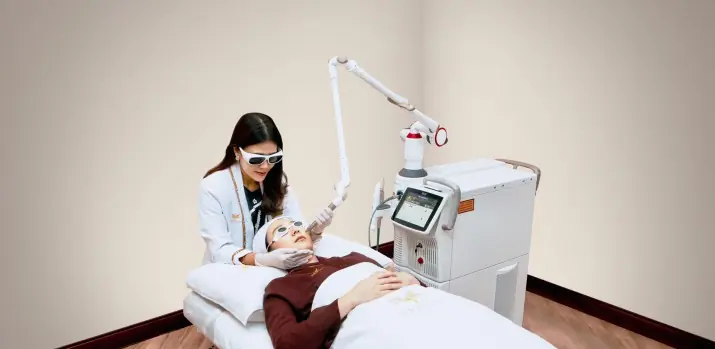
Treatment for Scar
Facial scars are commonly caused by old acne scars, chickenpox, or infections that affect the skin's color and texture. These scars often leave dark pockmarks and divots. Appearance concerns and reduced self-confidence can result from skin conditions. Proper treatment of facial scars is essential to prevent worsening
How to Remove a Scar on the Face
Fortunately, there are several ways to get rid of acne scars. Here are some methods you can try :
1. Chemical Peeling
Chemical Peeling is an effective treatment to remove facial scars. It uses an acidic technique to the face. Chemical peels remove the outer layer of skin and make it regenerate. The skin can turn red, feel irritated, and also start to peel. Chemical peels also need to be done regularly to be effective and produce an even skin texture, so the scars are reduced.
A study in the Journal of Cutaneous and Aesthetic Surgery, titled Chemical Peels for Acne and Acne Scars in Asians: Evidence-Based Review, evaluated several studies that have been conducted on the role of chemical peels in the treatment of acne and acne scars among Asians who are more prone to hyperpigmentation. According to a review of studies, chemical peels were found to be effective in treating acne and acne scars.
2. Dermabrasion
Microdermabrasion is a way to remove acne scars on the face by removing the outer layer of skin. The procedure uses abrasive materials, such as small crystals of bicarbonate or aluminum oxide, to scrub the outer layer of the skin. For maximum results, supporting treatments are required.
3. Derma Filler
Using a Derma Filler treatment is a powerful way to reduce facial scars. The treatment involves injecting a product that lifts the scarred area.
Various products are common in derma filler treatments, including hyaluronic acid, calcium hydroxyapatite, and bellafill. However, derma fillers are only temporary depending on the product, and repeat procedures are required to maintain results.
4. Fractional Laser
Fractional laser therapy aims to stimulate regeneration in facial pockmarks. The doctor will aim the laser beam at the scar tissue to burn the outer layer of the injured skin and stimulate new cell growth. After a period of healing, the facial scar will be camouflaged.
The aesthetic division of Seraphim Medical Center has the world's top fractional laser, the Fotona laser. This laser is still the flagship for treating scars, especially on the face.
5. Non-ablative Laser
Non-ablative lasers are less invasive and do not require a long healing time. In fact, you can resume normal activities immediately after treatment, as long as there are no complications. One of the non-ablative lasers that has the power to treat not only pigmentation, pores, and wrinkles but also scars is the Picoway Laser, which is also available at Seraphim Medical Center.
6. Microneedling (Dermapen/Roller)
Collagen Induction Therapy, also known as Microneedling is a treatment that involves puncturing the skin at the scar area using tiny needles. As these punctures heal, the skin produces more collagen to fill in the pockmarks.
7. Subsection
Subsection is a medical procedure that involves the use of a small needle to puncture the skin and release tissue attachment. During the procedure, the needle penetrates the skin and releases the tissue attachments, allowing the skin to gradually rise and smooth out
If the correct treatment is combined with the right proportion and applied at the right time, the scar will heal properly, resulting in smoother skin.
By Seraphim Medical Team





